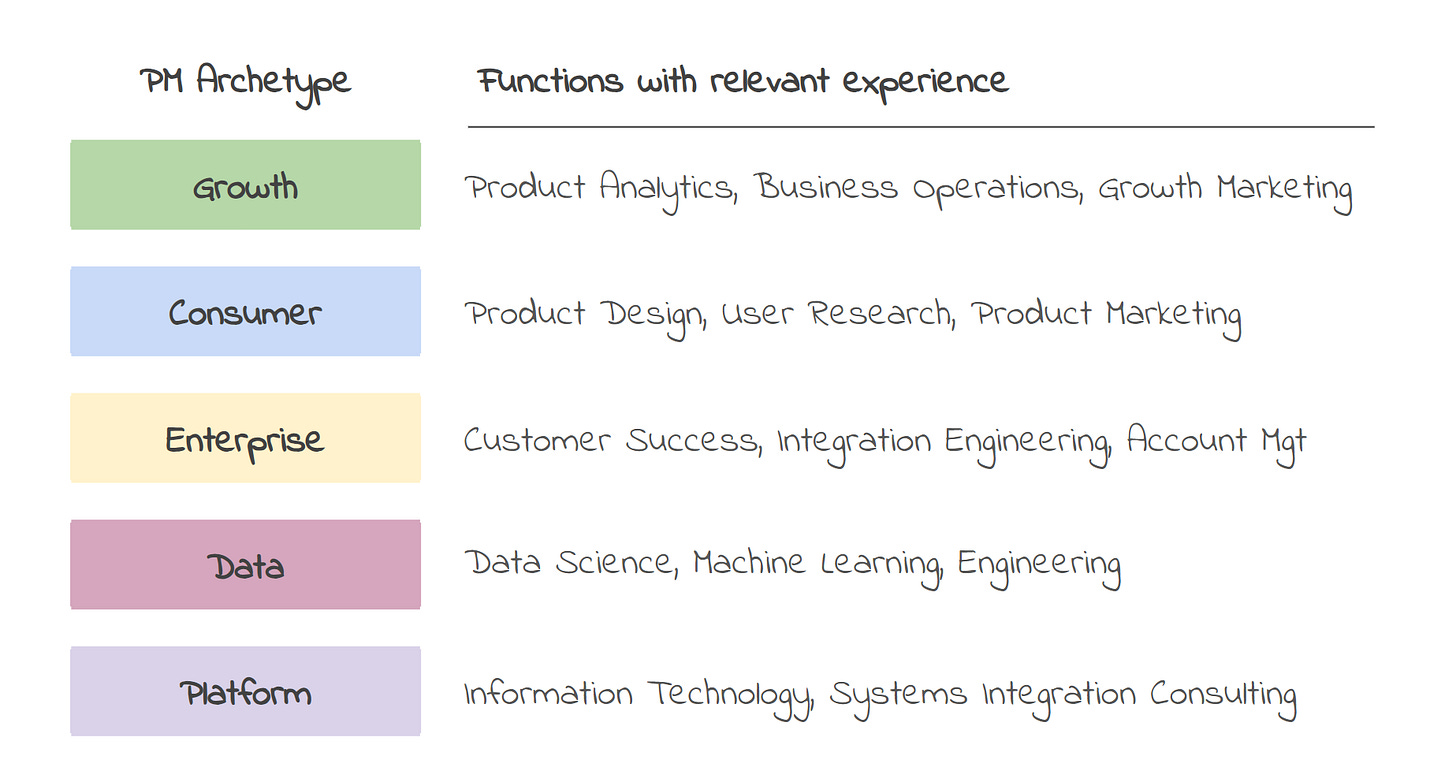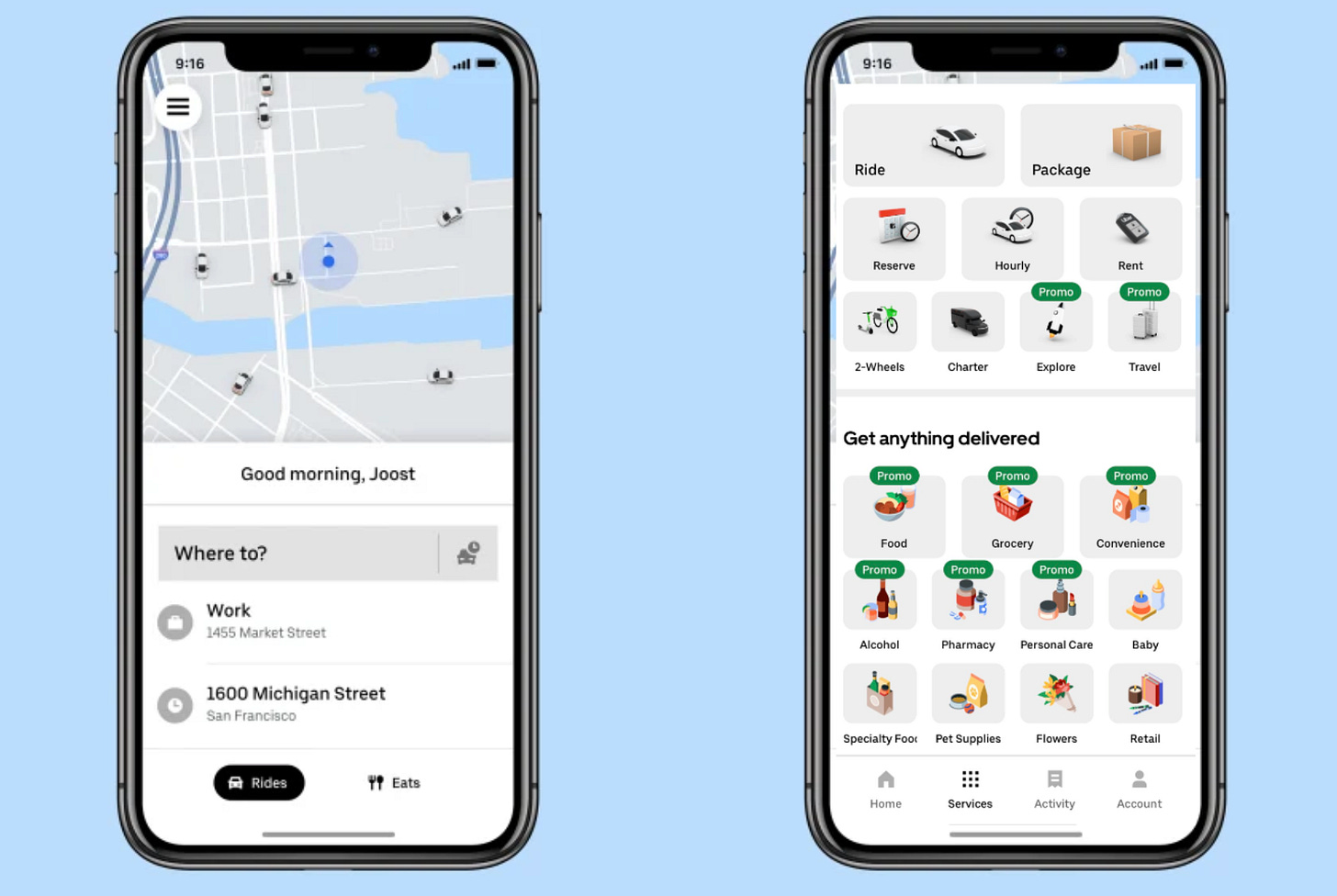Your Best PM might be in Marketing (or Finance, or…)
In many tech organizations, there is a belief that product management is a craft you can only learn by starting from the ground floor. Experience outside the product management function is deemed irrelevant, and internal transfers into product management, even very senior, often have to transfer in at the same level as recent college graduates.
In my experience, this belief unnecessarily limits the talent pool. Many of the best product managers I’ve worked with came into the role with a previous career in a different function, and their functional experience helped them succeed at senior levels in product management.
The key to hiring from other functions is aligning the role's archetype with the candidate's experience.
A more detailed description of these archetypes can be found at the end of this article
I’ve found an archetype that segments based on how the manager interacts with the customer to be most informative. For example, growth PMs tend to take a pattern-based experimental approach to understand customer behavior, primarily viewing interactions through the lens of A/B testing results. Enterprise PMs, on the other hand, work closely with sales teams to gather customer input, rarely relying on A/B testing.
Other product manager segmentation approaches, such as those based on product lifecycle stages (i.e., "0 to 1" or "1 to 100"), I have found to be less valuable. These lifecycle-based categorizations are often too company- and lifecycle-specific to apply broadly to skill sets: A “0 to 1” product manager in a large organization with existing products and distribution exercises a very different muscle than the first product manager in a company with no existing products or distribution.
What about heads of products / chief product officers?
Would I hire someone from an adjacent function directly into a product leadership role? The answer is no, though I would still value their adjacent experience. Product leadership requires firsthand product management experience - any manager of product teams should ideally have been a product manager themselves. For hiring the very first product manager in a company, I’m very aligned with Ken Norton’s perspective in “How to Hire a Product Manager”
What is the difference between a consumer and a growth product manager?
I think this point is best illustrated with a visual. Behold, the Uber app built by a consumer PM (left) and a Growth PM (Right)
Archetype descriptions
Growth PM
Responsible for optimizing user engagement and retention across acquisition channels, websites, mobile apps, and other touchpoints. Leveraging user data and analytics, they identify high-potential customer segments and craft targeted messaging campaigns and personalized product experiences that hook users and convert them into loyal customers.
Consumer PM
Lives and breathes understanding user needs, attitudes, and behaviors. With a passion for product details that light up the consumer’s eyes, they balance user value and business goals to bring delightful experiences to market. The Consumer PM has their finger on the pulse of the consumer at all times. They translate insights into intuitive and appealing product experiences that align with consumer goals and influence behavior change.
Enterprise PM
Deeply familiar with the business landscape, they assess market opportunities and translate customer needs into valuable B2B solutions. Close collaboration with sales, customer success, engineering, and executives helps the Enterprise PM spearhead the development of products and features that solve real business challenges. With an entrepreneurial spirit, they build partnerships, platforms, and services to power business growth.
Data PM
Architects the analytics foundations that feed product decisions. With expertise in machine learning, optimization algorithms, and scalable data infrastructure, they enable fact-based product development. The Data PM builds self-improving systems that gather customer insights, run rigorous experiments, and manage complex data flows to power future-ready products. They generate knowledge and drive innovation by leveraging the latest data science capabilities within the organization.
Platform PM
Architect of internal innovation and efficiency. They create seamless technology products and systems for employees by breaking down silos and fostering integration. Whether designing intuitive internal tools, building a shared infrastructure, or enabling automation, the Platform PM balances user experience with business cohesion.



